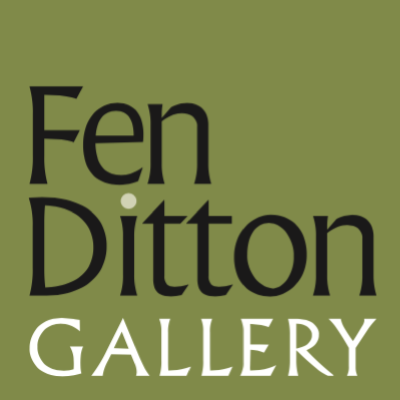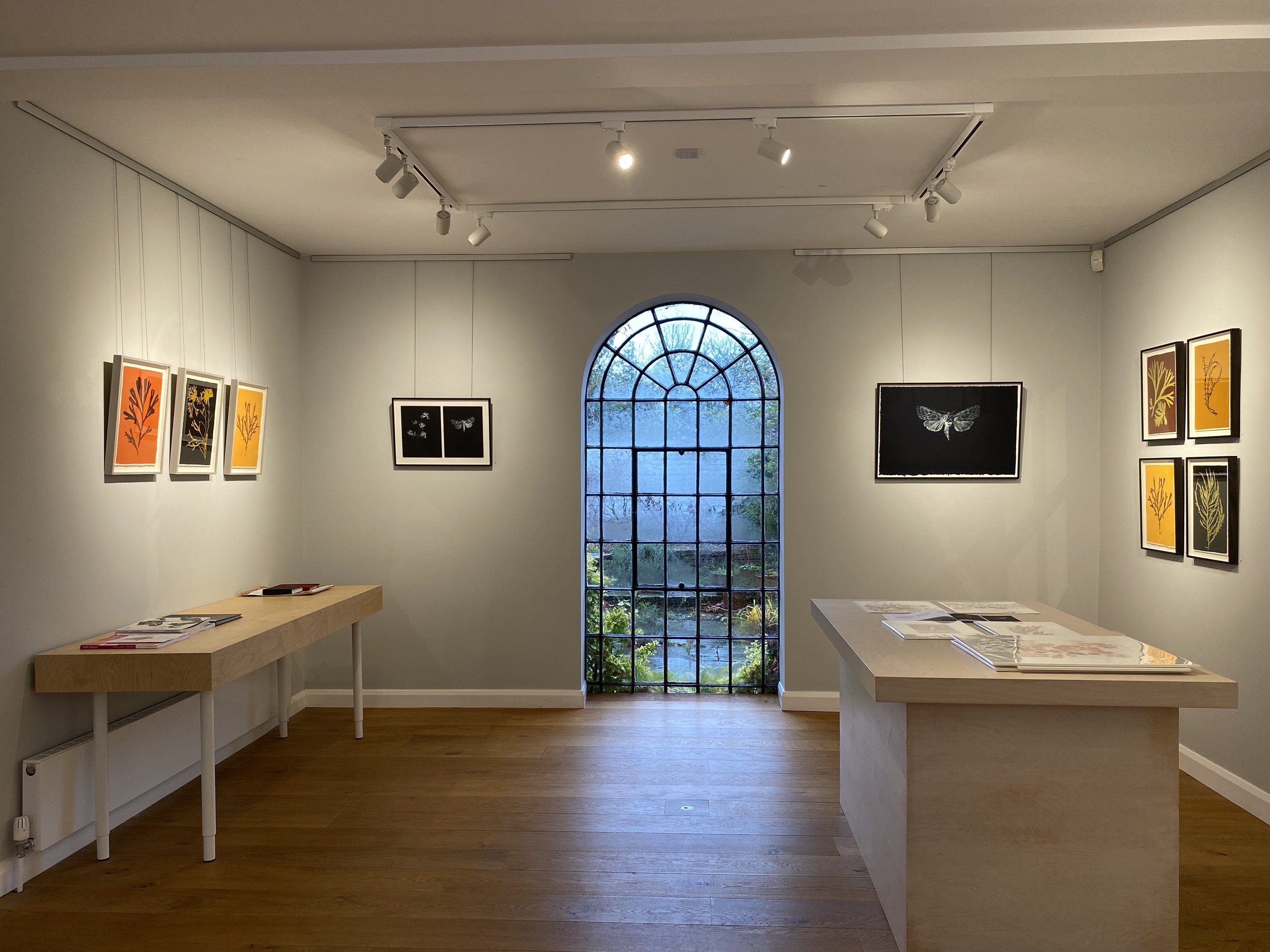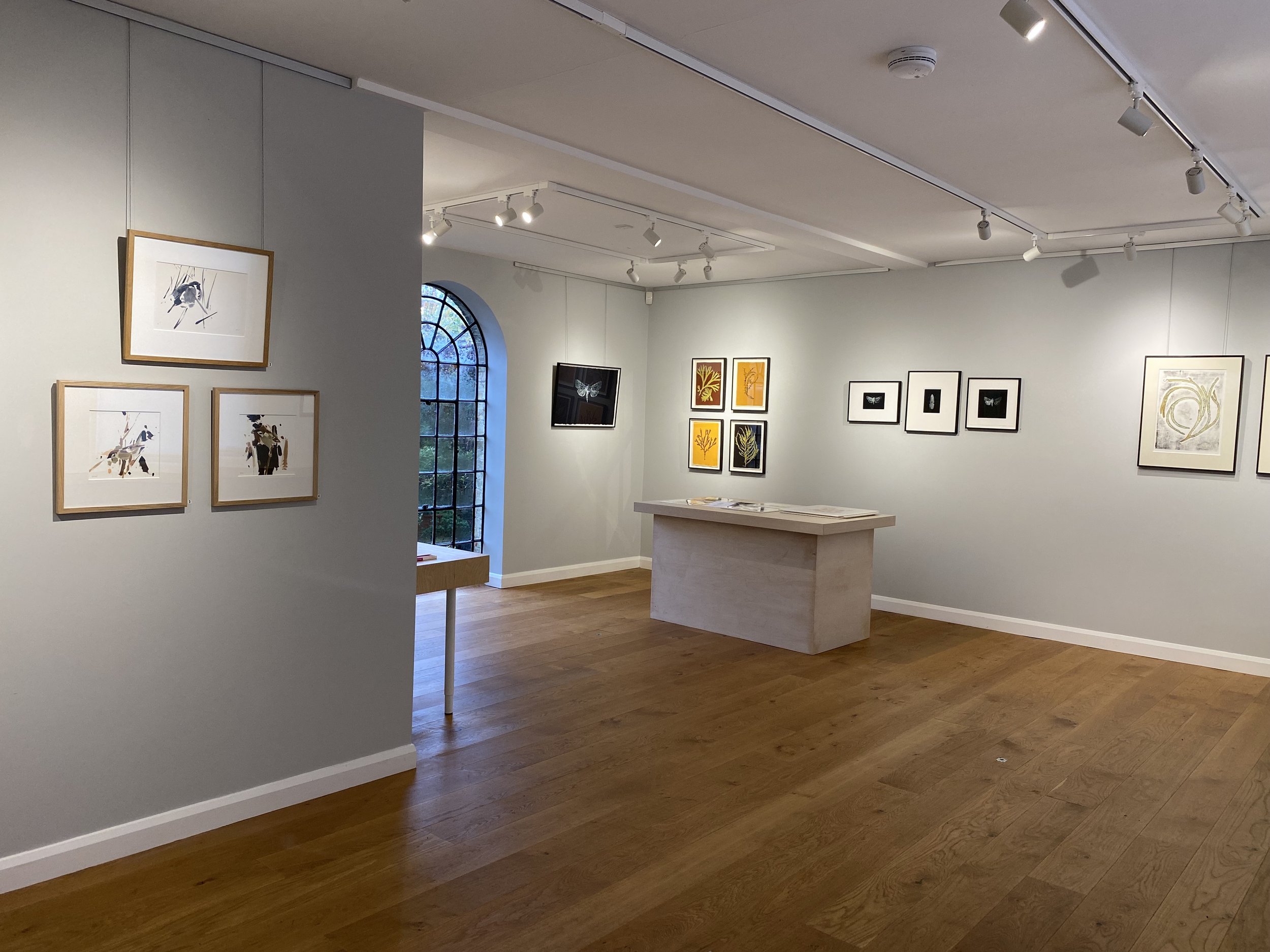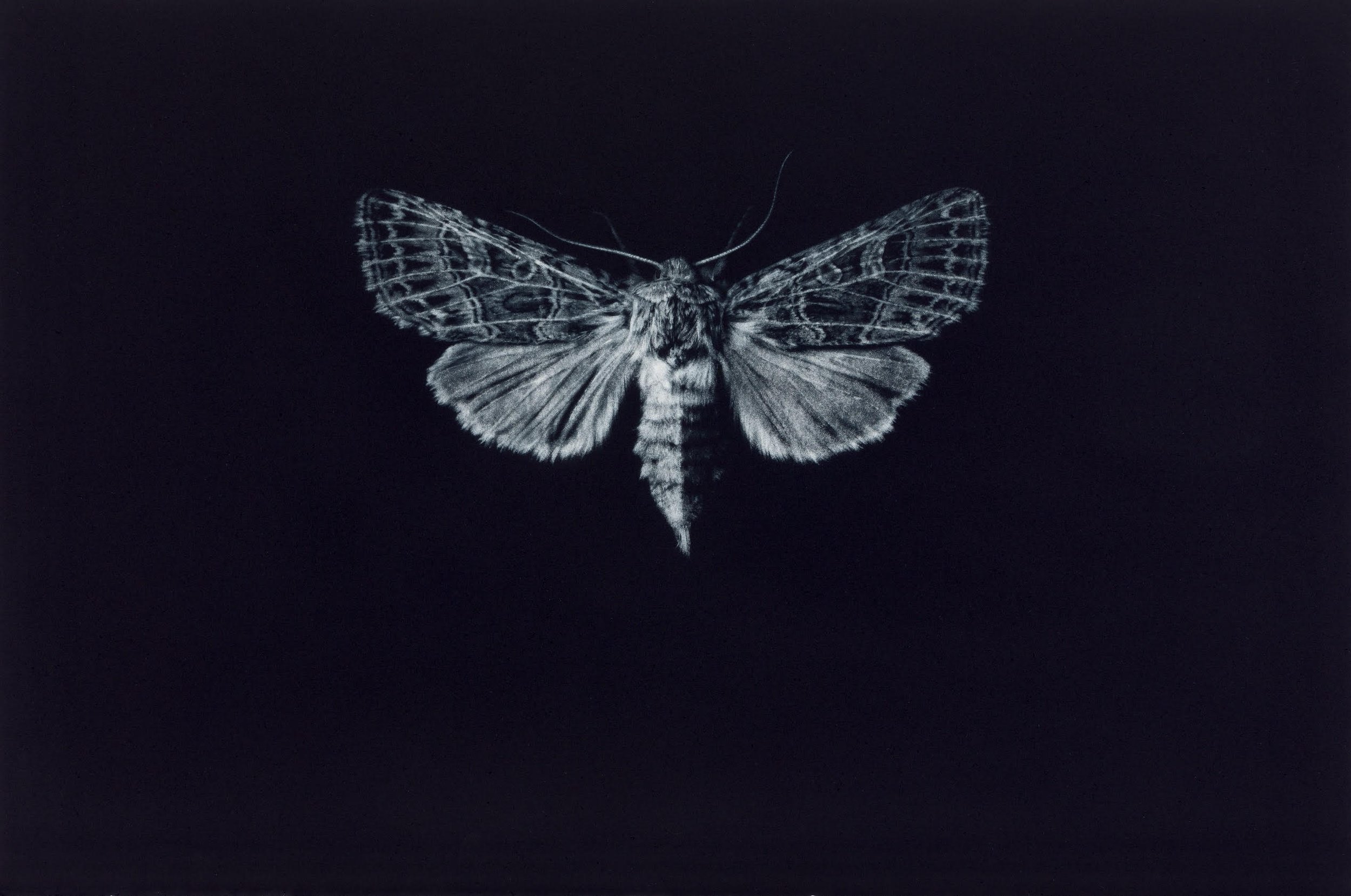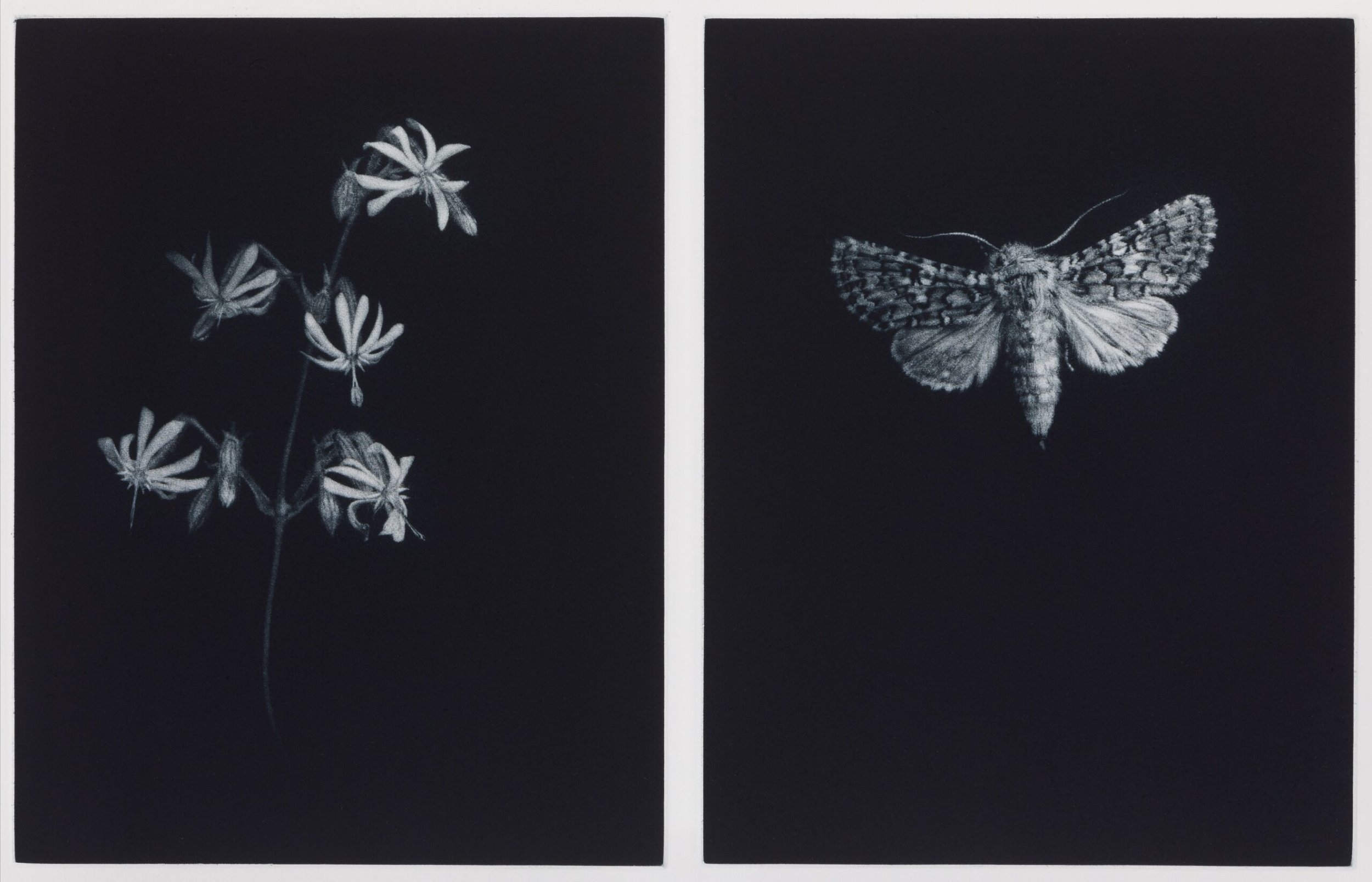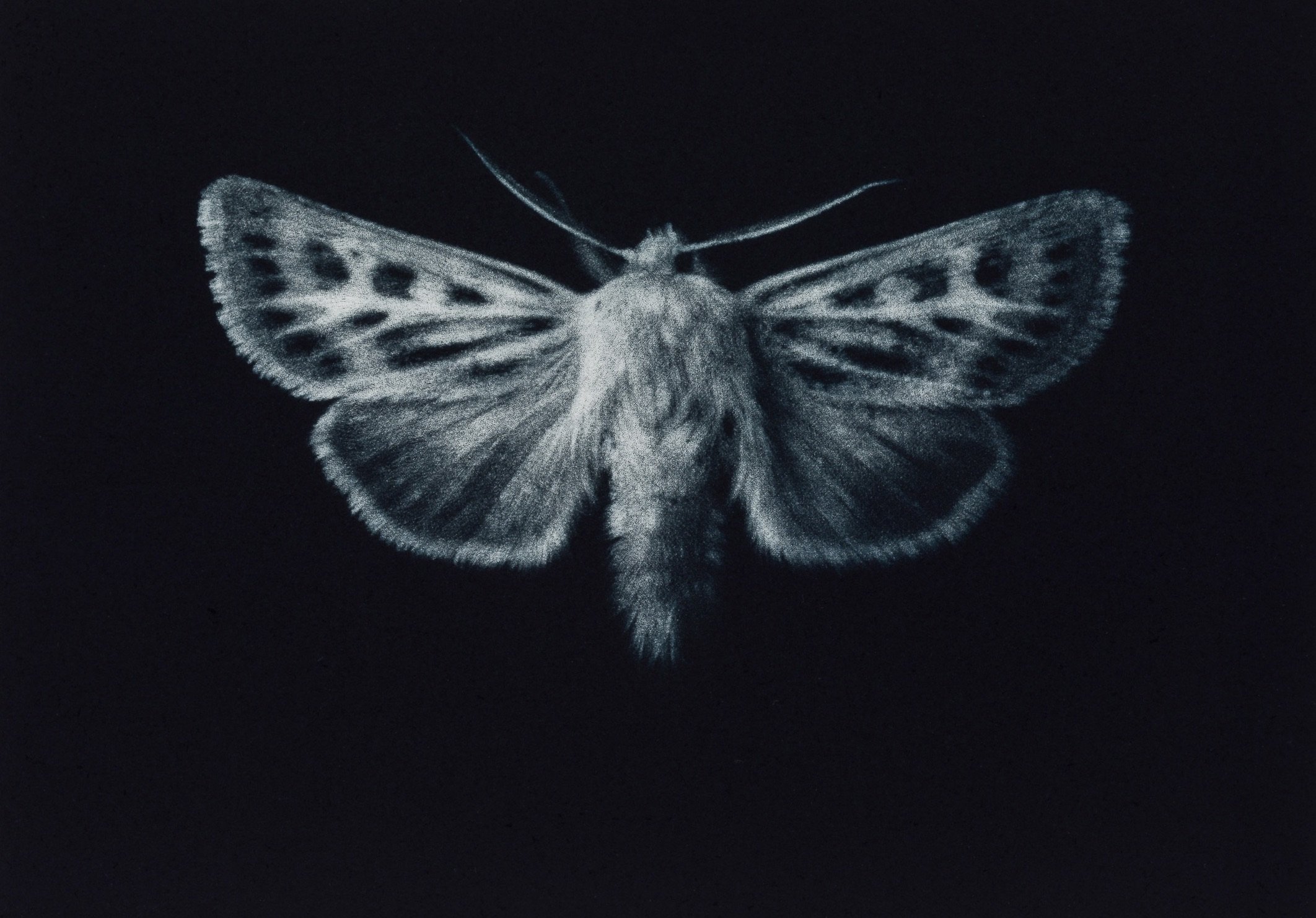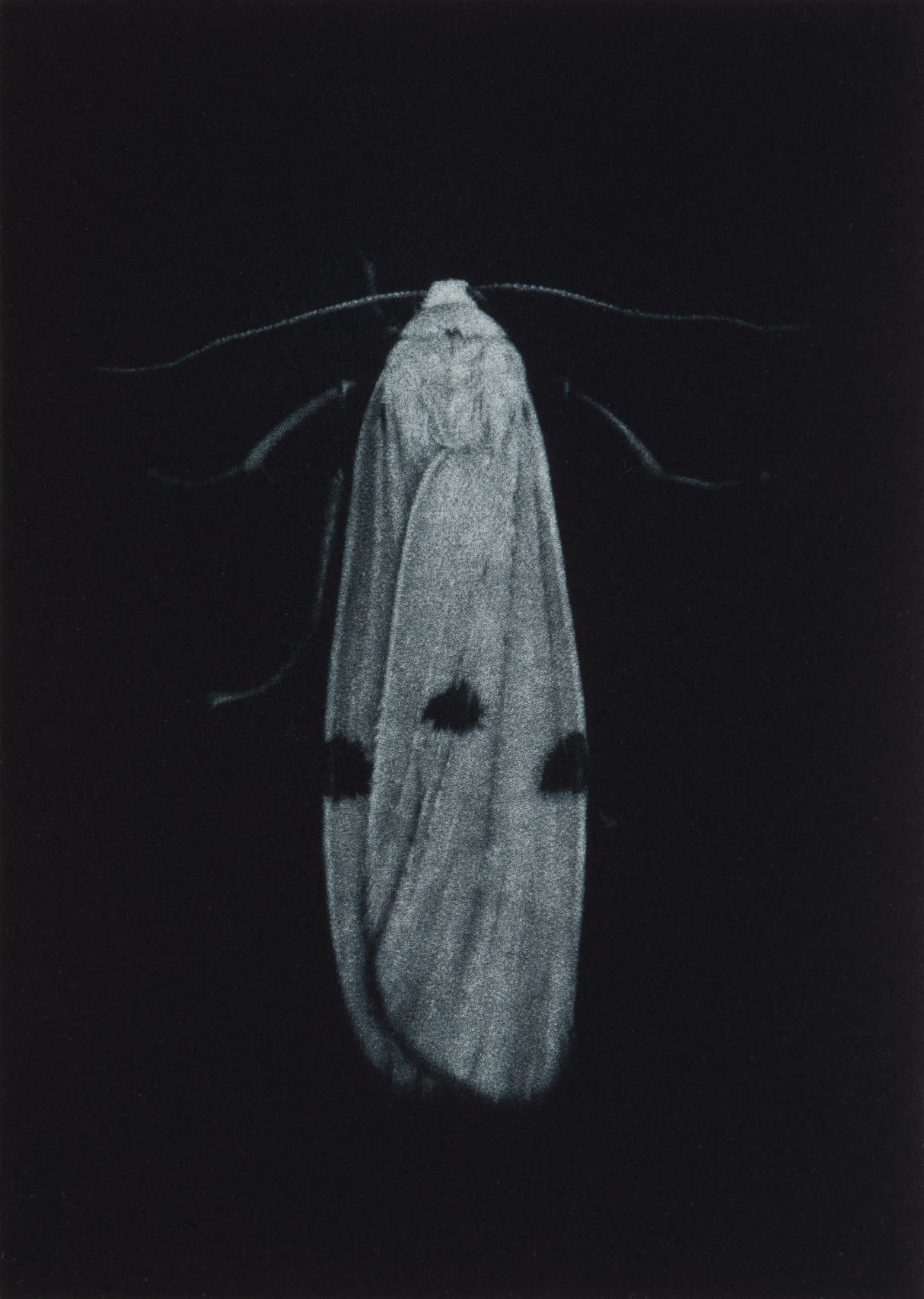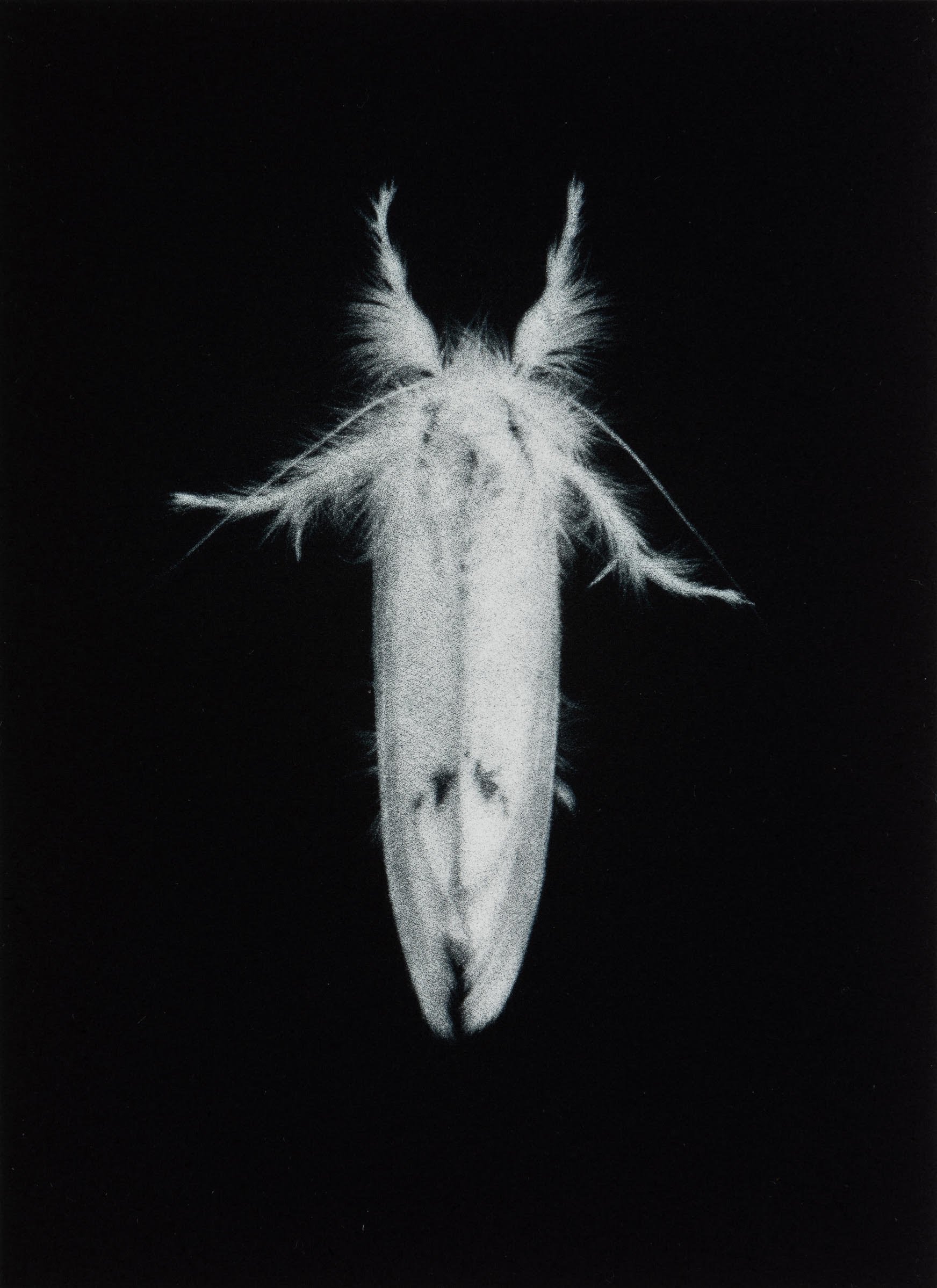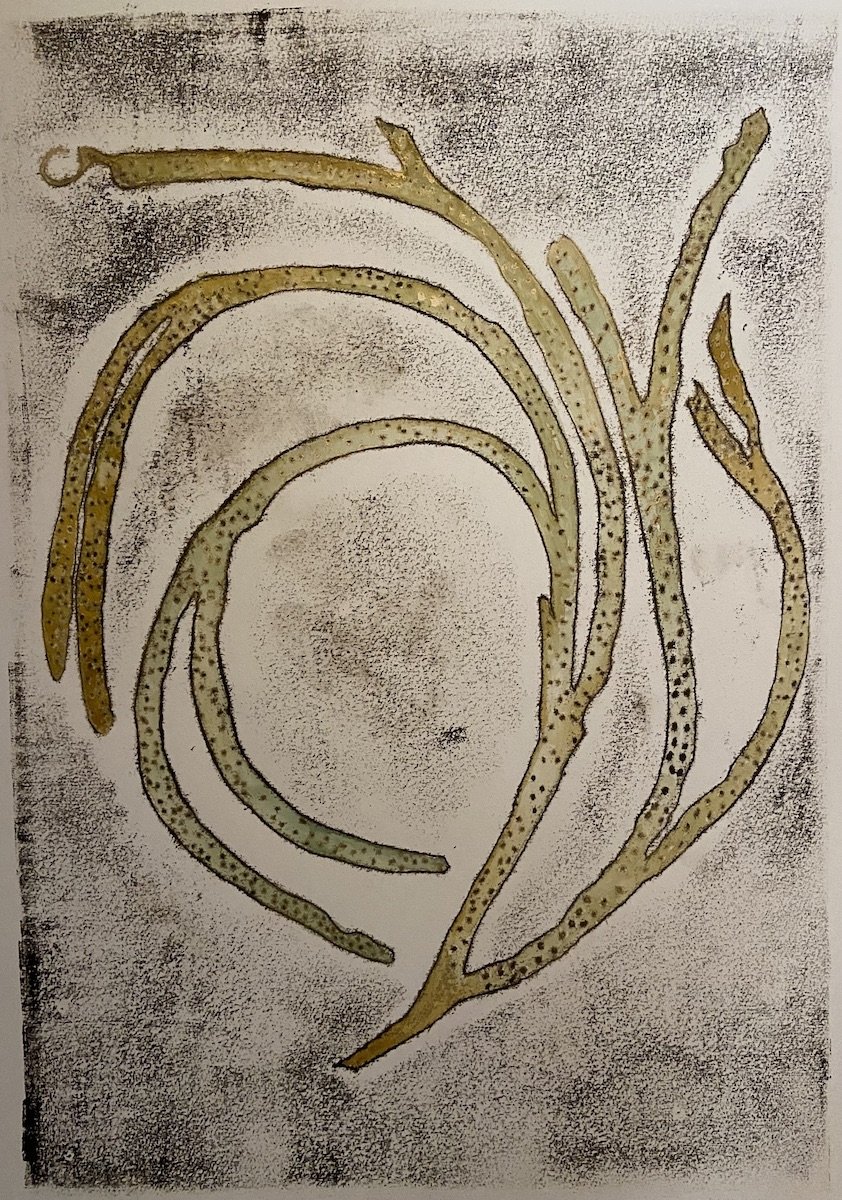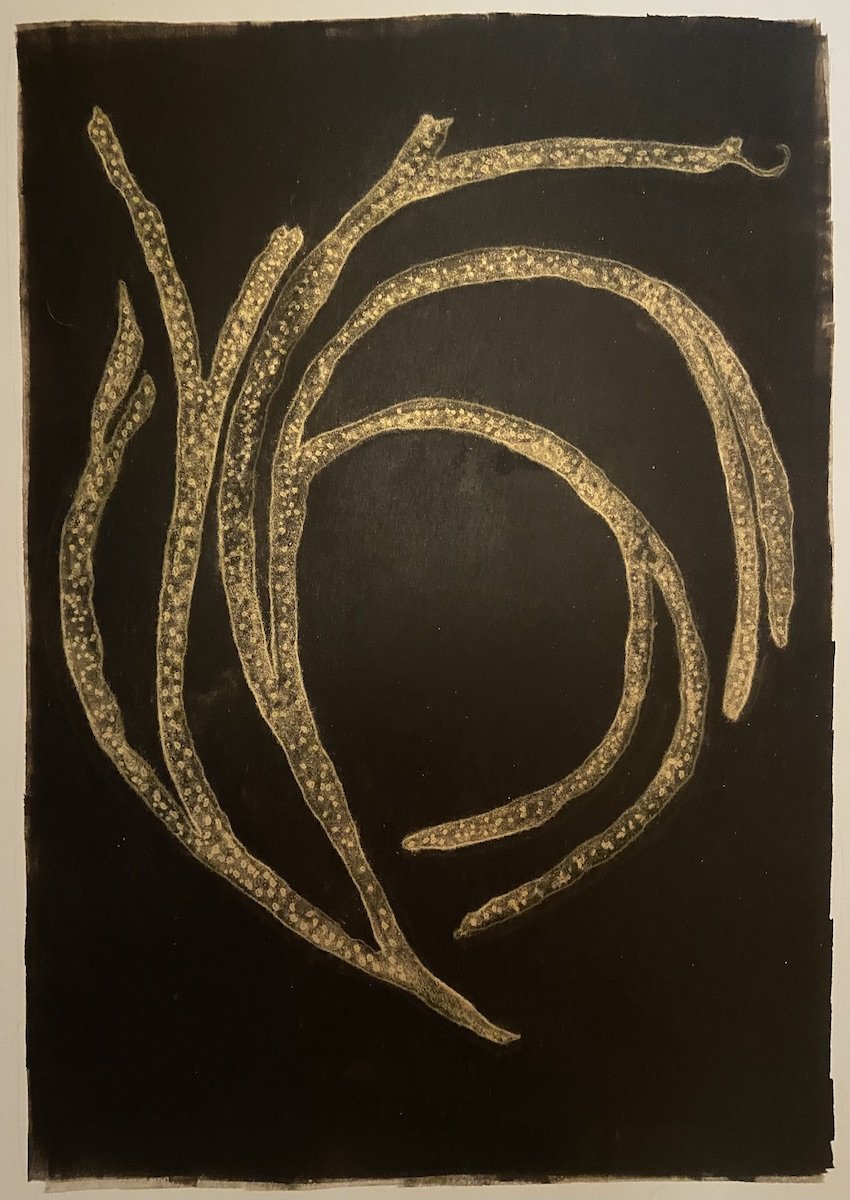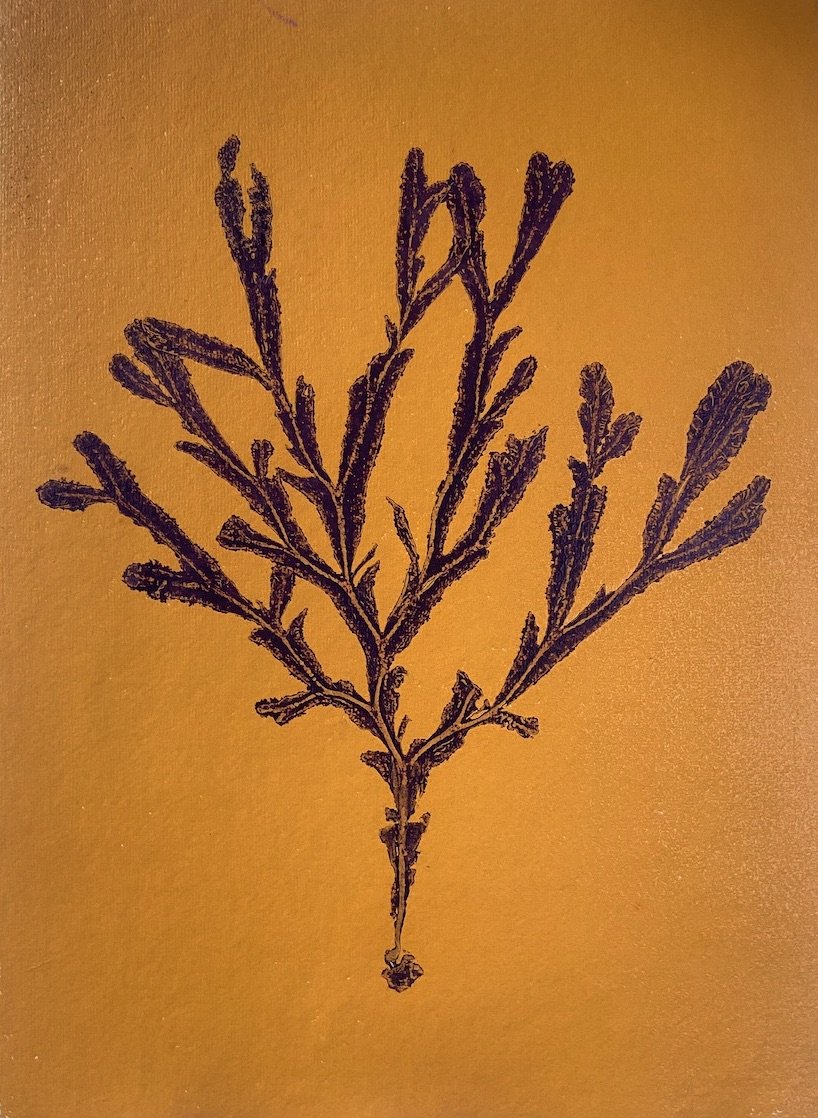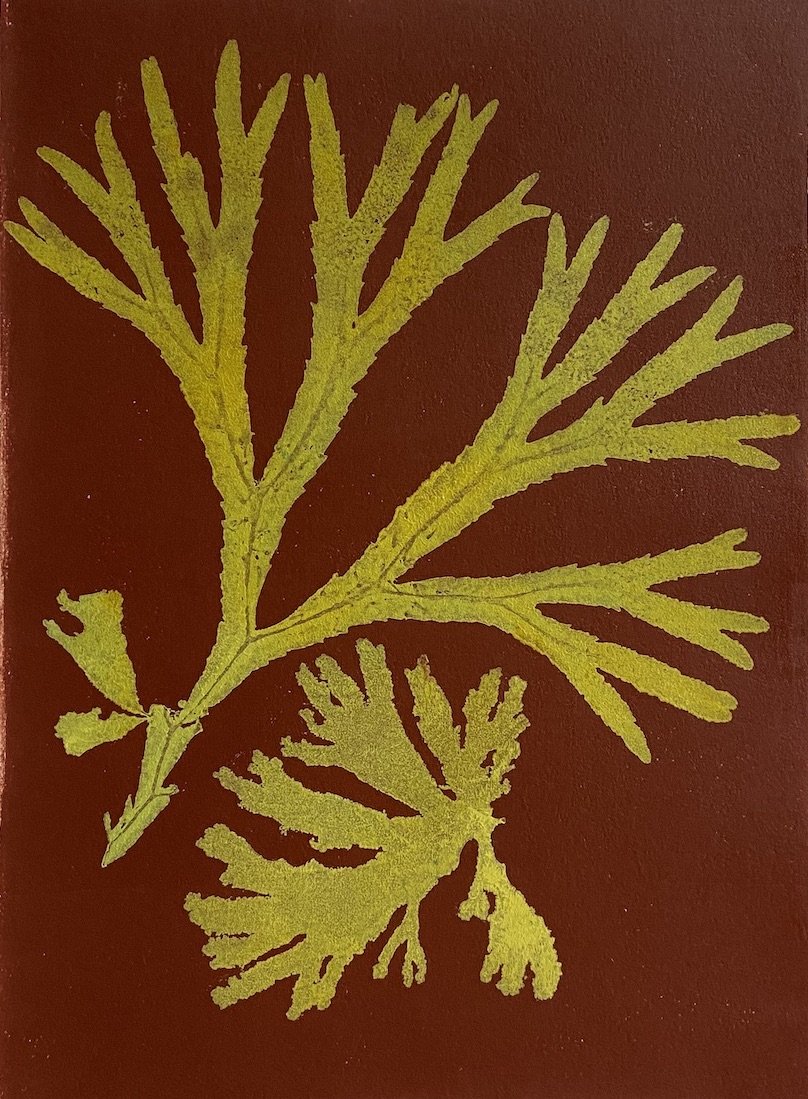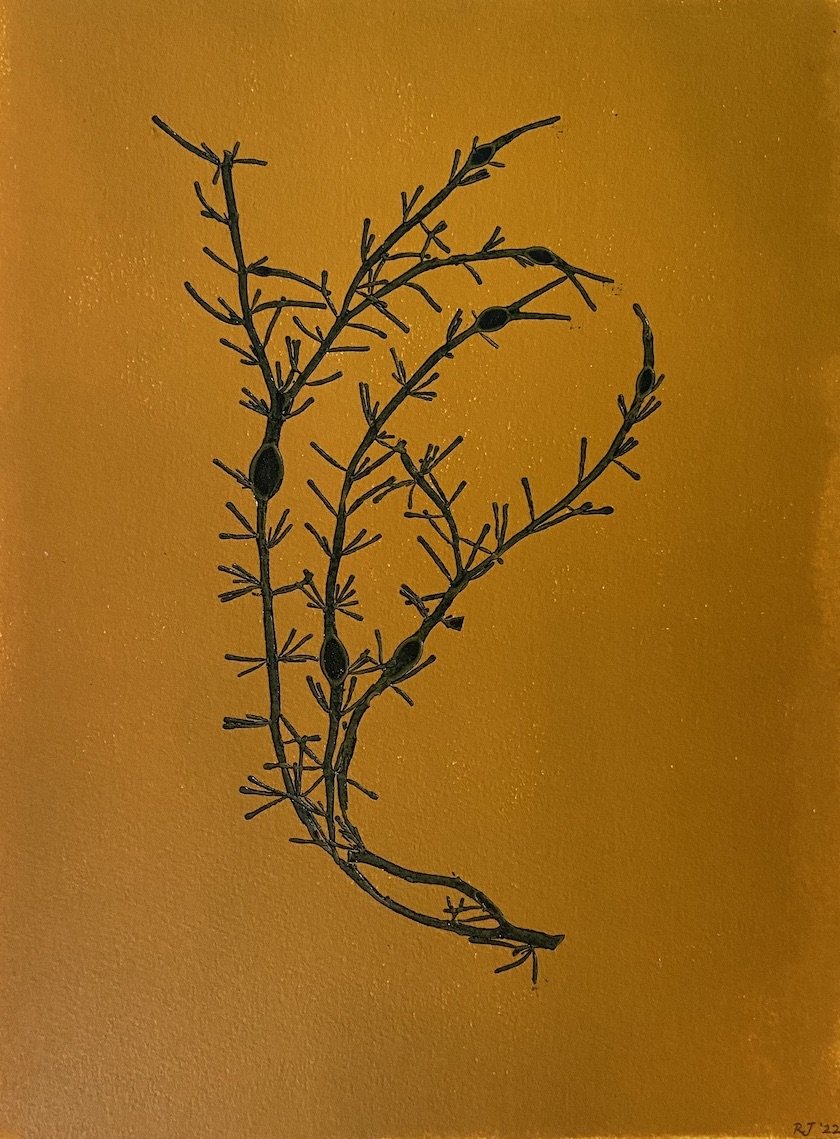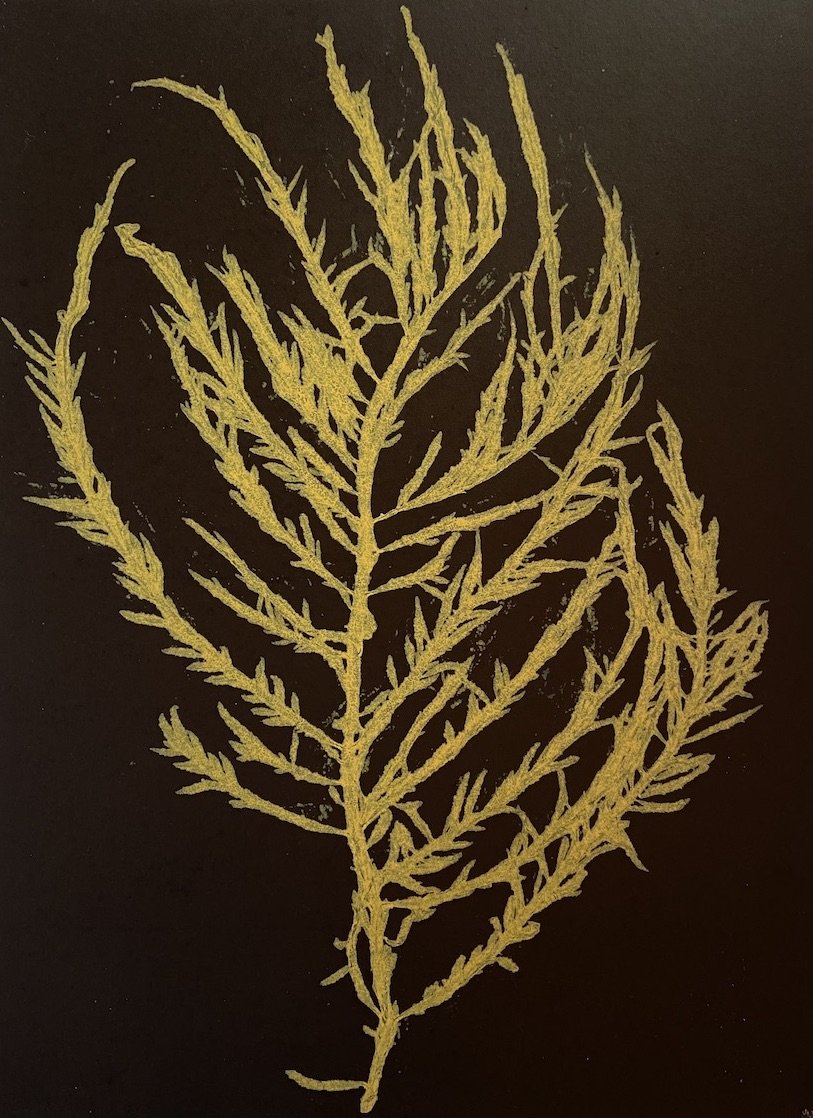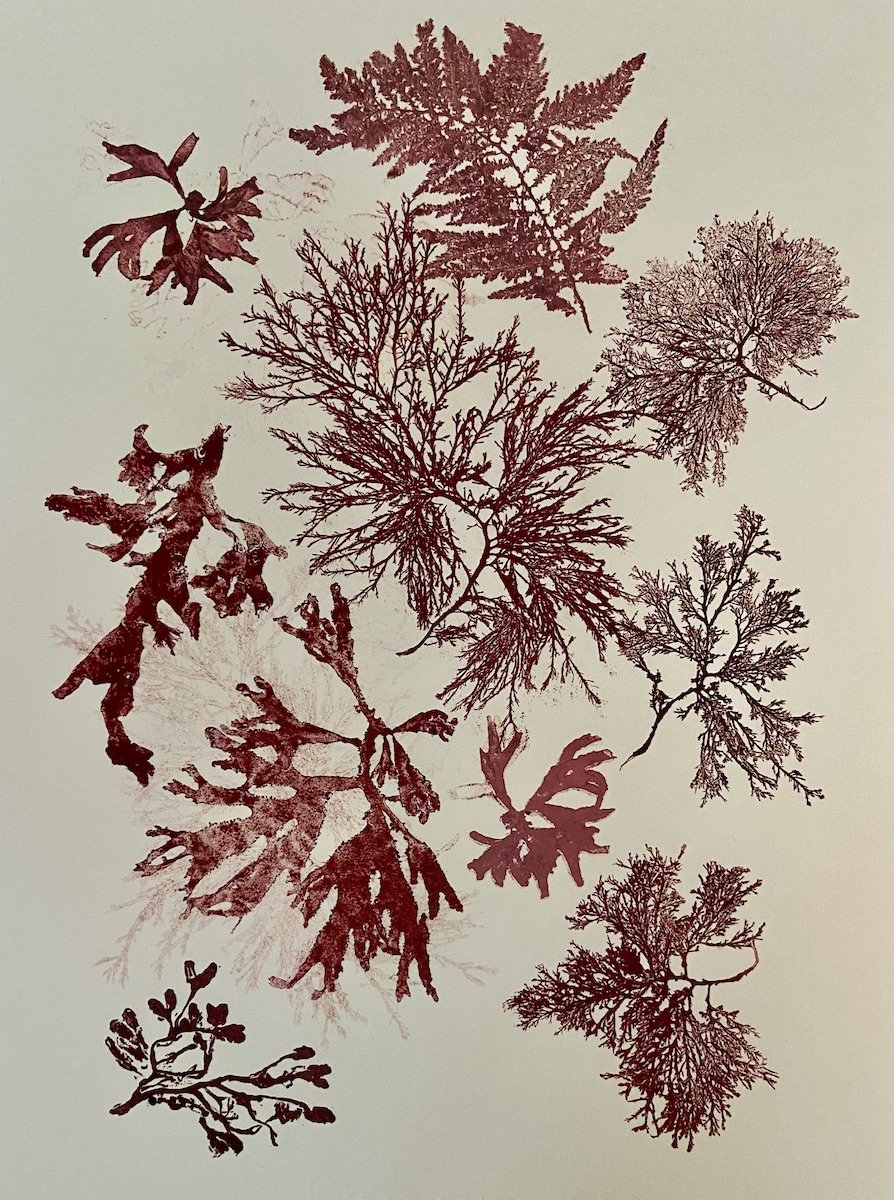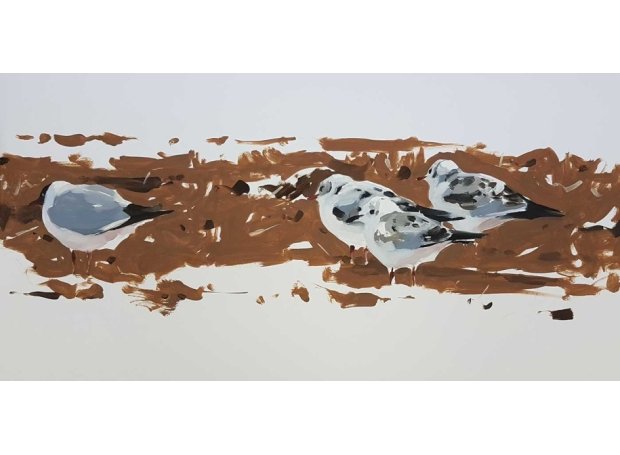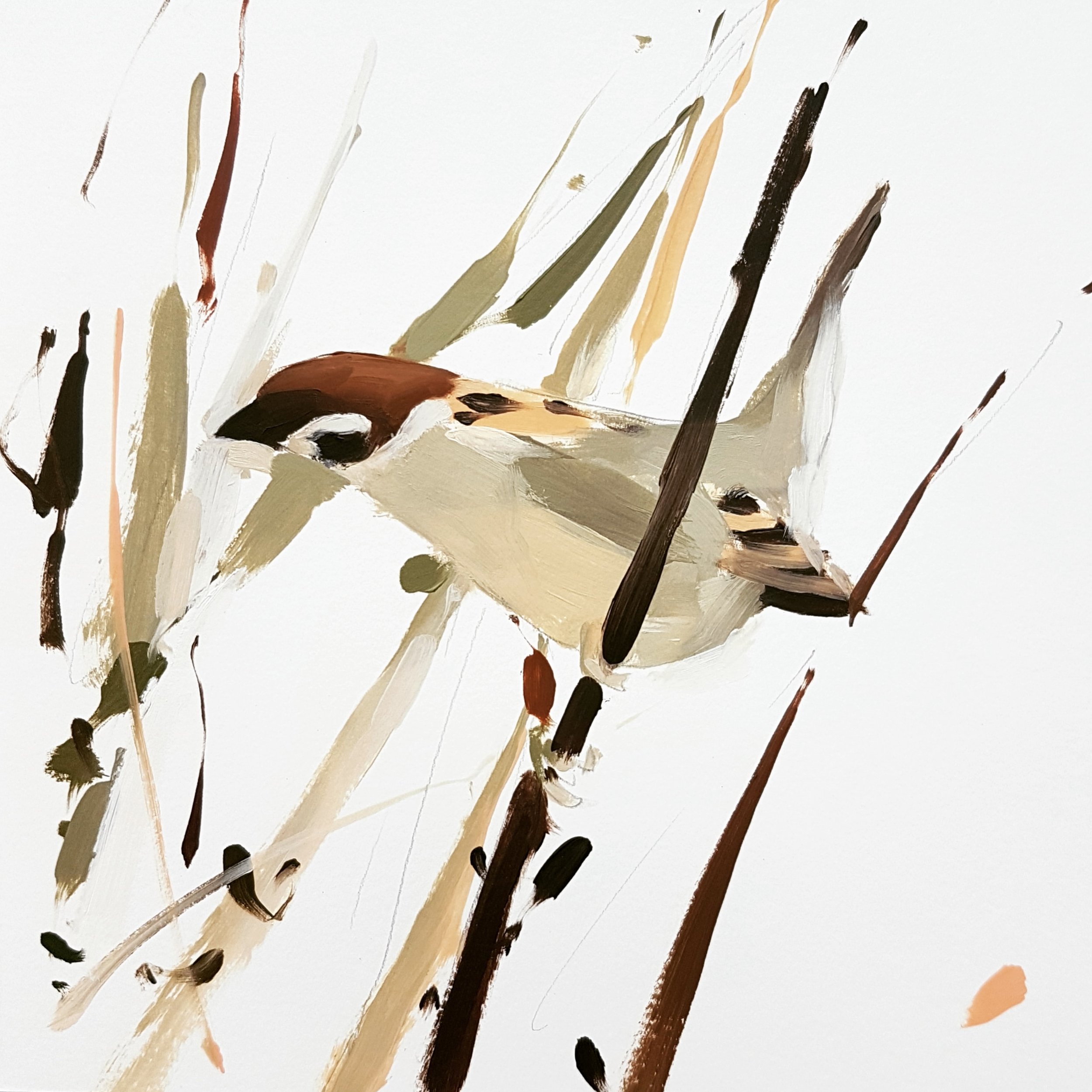Art, Science and the Natural World
18 - 27 November 2022
Our third and final exhibition in a series of back-to-back shows celebrating artists’ responses to the natural world. Rebecca Jewell, Sarah Gillespie, and Esther Tyson are exploring the threat of severe environmental change on the status and diversity of UK species, focussing on seaweeds, moths, and farmland birds. The exhibition will showcase works and research that has been developed during their artist residencies with the Cambridge Conservation Initiative (CCI).
Sarah Gillespie (mezzotint engravings), Rebecca Jewell (monoprints), Esther Tyson (paintings)
Based in the David Attenborough Building, CCI brings together the university and a group of national and international conservation NGOs working together to tackle the nature and climate crises across over 180 countries. Since 2016, CCI has been embedding artists into a rich community of research, policy, practice and learning both in situ, and across sites supported by CCI’s Endangered Landscape Programme (ELP) across Europe and run a programme of collaborative events and exhibitions.
Species declines lies at the heart of the biodiversity crisis, and CCI hosts IUCN’s Red List Unit, a hub for scientists assessing the status of animal and plant communities across the globe. CCI’s curator, John Fanshawe, believes the Red List can be a catalyst for interdisciplinary conversations about the meaning of species loss. “Enabling contemporary artists and scientists to collaborate and share new ways of expressing the crisis surrounding extinction, notably of less well-known species, is vital.”
By exploring seaweeds, moths, and farmland birds, Jewell, Gillespie, and Tyson are celebrating such species; species of the sea’s edge, of darkness and of exhausted field margins, plants and animals that quietly play pivotal roles in our world, but invariably risk bleeding away unsung.
Sarah Gillespie
Sarah Gillespie was born in Winchester in 1963. She studied 16th & 17th century methods and materials at the Atelier Neo-Medici in Paris before going on to read Fine Art at Ruskin School of Drawing & Fine Art. Born into a (in her own words) chaotic, creative household, Gillespie says of her childhood that art materials were just always around to be experimented with. That and the fact she spent much of her early years outside, exploring the natural world has been pivotal in the artist path she has taken.
Gillespie’s detailed, monochrome mezzotints celebrate one of the UK’s most elusive insects, the moth. The artist reminds us that ‘moths, as with other insects, are in serious decline. Since I began studying and drawing moths ten years ago, I have felt more and more aware of their importance and the need to record and draw attention to their fragile beauty.”
Mezzotint, meaning ‘half tone’ in Italian, is a engraving technique by which the artist uses a rocker to roughen the whole surface of the plate, making the deep black background, and the lighter and white tones are created using a process of scraping back smoothing the surface. Gillespie describes this process as the ‘art of erosion’ - something she feels speak to the nature of moths “Moths are both there, and not there, present but hidden.” Hannah recently interviewed Sarah for the Fen Ditton Gallery podcast. You can listen to the interview here.
Rebecca Jewell
Rebecca Jewell b. 1963 studied archaeology and anthropology at the University of Cambridge and completed a doctorate in Natural History Illustration at the Royal College of Art in 2004. Her intricate drawings of artefacts and bird specimens, and her unique feather collages, are inspired both by material culture collections in museums and a cross- cultural examination of the human exploitation and veneration of birds.
Rebecca is a Fellow of the Zoological Society of London (FZSL), Fellow of the Linnean Society (FLS) and Member of the Art Workers’ Guild (AWG). Jewell divides her time between Fen Ditton and London, and recently completed an artist residency at the British Museum as part of the ‘In Storage’ project.
Rebecca Jewell has devoted her residency time to develop her ongoing study of seaweeds another, often less understood, element of Britain’s natural world. There are over 650 species in coastal waters . Her bold graphic nature prints in which inked specimens are placed on paper then run through a press reveal something of the huge diversity of these underwater marine algae and link to scientific research exploring the impact of warming seas on biodiversity.
Esther Tyson
Esther Tyson (b. 1973, Barrow in Furness, Cumbria) is a British painter and printmaker. Tyson studied at the University of Wales before being accepted into the Royal College of Art, London. Whilst at the Royal College of Art Esther won a travel scholarship to study large carnivores in Slovakia. It was this trip ignited a passion for travel, drawing, painting and observing creatures in their natural environment.
Tyson’s drawings and paintings celebrate Britain’s birdlife: known and loved by many although many formerly common species are now in decline. She has travelled the world studying and drawing birds in their natural environments working alongside scientists in organisations such as Birdlife International and the British Trust for Ornithologists.
